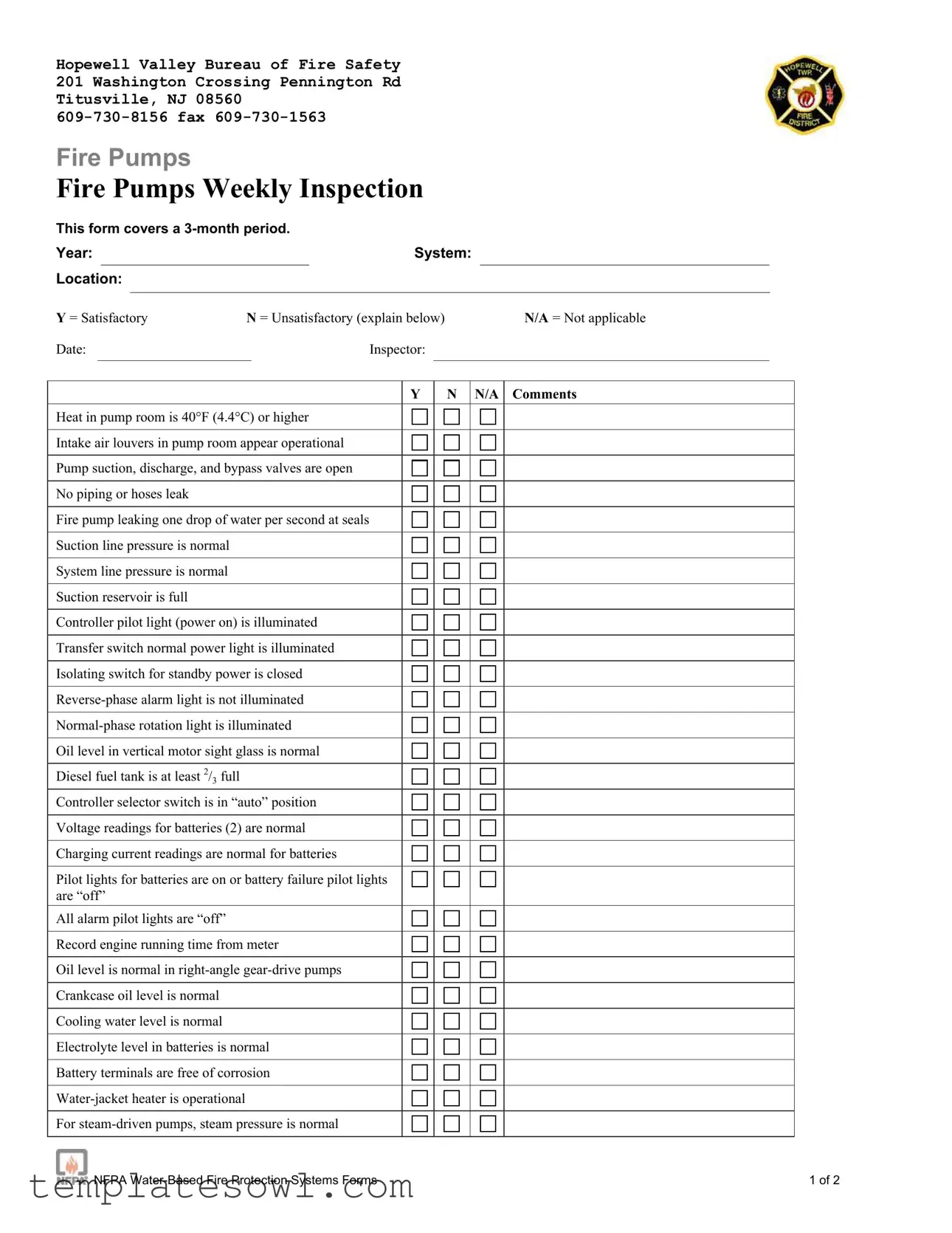Hopewell Valley Bureau of Fire Safety 201 Washington Crossing Pennington Rd Titusville, NJ 08560
609-730-8156 fax 609-730-1563
Fire Pumps
Fire Pumps Weekly Inspection
This form covers a 3-month period.
Year:System:
Location:
Y = Satisfactory |
N = Unsatisfactory (explain below) |
N/A = Not applicable |
Date:Inspector:
YN N/A Comments
Heat in pump room is 40°F (4.4°C) or higher
Intake air louvers in pump room appear operational
Pump suction, discharge, and bypass valves are open
No piping or hoses leak
Fire pump leaking one drop of water per second at seals
Suction line pressure is normal
System line pressure is normal
Suction reservoir is full
Controller pilot light (power on) is illuminated
Transfer switch normal power light is illuminated
Isolating switch for standby power is closed
Reverse-phase alarm light is not illuminated
Normal-phase rotation light is illuminated
Oil level in vertical motor sight glass is normal
Diesel fuel tank is at least 2/3 full
Controller selector switch is in “auto” position
Voltage readings for batteries (2) are normal
Charging current readings are normal for batteries
Pilot lights for batteries are on or battery failure pilot lights are “off”
All alarm pilot lights are “off”
Record engine running time from meter
Oil level is normal in right-angle gear-drive pumps
Crankcase oil level is normal
Cooling water level is normal
Electrolyte level in batteries is normal
Battery terminals are free of corrosion
Water-jacket heater is operational
For steam-driven pumps, steam pressure is normal
NFPA Water-Based Fire Protection Systems Forms |
1 of 2 |
Hopewell Valley Bureau of Fire Safety 201 Washington Crossing Pennington Rd Titusville, NJ 08560
609-730-8156 fax 609-730-1563
YN N/A Comments
Examine exhaust system for leaks
Check lube oil heater for operation (diesel pumps)
Drain condensate trap of cooling system
Check for water in diesel fuel tank
Business Representative __________________________________ Phone_____________________
Signature ________________________________________________ Date ______________________
NFPA Water-Based Fire Protection Systems Forms |
2 of 2 |


